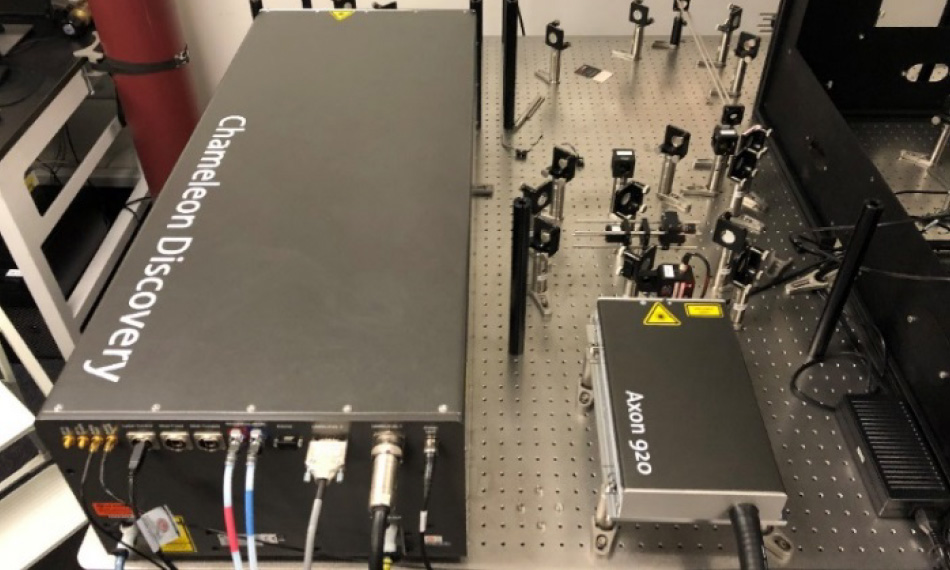ETNew Robot Fish Swims Like the Real Thing
An autonomous, self-contained robot is designed to move like a fish. Credit: YouTube MIT View full size image
Robot fish could one day be enlisted for undercover science missions.
A soft-bodied robot that looks and swims like a fish was unveiled by researchers at MIT this week; they say something like it might be able to infiltrate schools of real fish and gather data about their behavior.
The autonomous robot swishes side-to-side underwater as different parts of its body are inflated and deflated with a fluid stored as a gas onboard, the creators explained in a video. The result is a flexible robofish can execute escape maneuvers just as quickly as a real fish can — turning its body in a mere 100 milliseconds. [The 6 Strangest Robots Ever Created]
For years roboticists have been working on durable, flexible bots that mimic other squishy creatures, such as earthwormlike robots that could survive blows from a hammer and octopus-inspired bots that could squeeze into small places for exploration or search-and-rescue operations.
The newly revealed robot belongs to a long line of fish-inspired creations, including RoboTuna, an underwater automaton with 2,843 parts controlled by six motors that came out of MIT in 1994.
Since the new fish robot is self-contained, it does need some hard parts inside its soft body. The “brains” of the fish, or all of its rigid pieces of hardware, are stored at the head, while the robot‘s lower half and tail are more pliable, the researchers explained. The team used a 3D printer to make the molds for casting the fish’s silicone rubber parts.
In addition to greater flexibility and durability than their rigid counterparts, soft robots may be safer for humans.
“As robots penetrate the physical world and start interacting with people more and more, it‘s much easier to make robots safe if their bodies are so wonderfully soft that there’s no danger if they whack you,” Daniela Rus, director of MIT’s Computer Science and Artificial Intelligence Laboratory, said in a statement.
There is at least one practical drawback to the robot in its current iteration: It exhausts its supply of carbon dioxide gas after just 20 or 30 escape maneuvers. The researchers hope a next-generation version of the fish will be able to swim for a half-hour straight, using pumped water instead of carbon dioxide to inflate the channels.
A description of the fish robot is free to read online in the inaugural issue of the journal Soft Robotics this month.
Follow Megan Gannon on Twitter and Google+. Follow us @livescience, Facebook & Google+. Original article on Live Science.
自动翻译仅供参考
机器鱼能像真鱼一样游泳
ETNew机器鱼游动像真正的Thing
一个自主的,独立的机器人设计用于将像一条鱼。图片来源:YouTube的麻省理工学院
机器鱼有一天,被征集服现役卧底科学任务。
本周麻省理工学院的研究人员揭开了一种看上去像鱼一样游泳的软体机器人,他们说类似的东西可能会渗透到真正的鱼的学校,并收集有关他们行为的数据。
的自主机器人swishes一侧到另一侧水下作为其身体的不同部位进行充气和放气与作为气体储存在液板载,创作者在视频解释。其结果是一个灵活的机器鱼可以很快速执行逃生演习作为一个真正的鱼 mdash;转动它的身体在短短100毫秒。 [6奇怪的机器人有史以来The 6 Strangest Robots Ever Created这可能挤入小地方进行勘探或搜索和救援行动 NBSP;
新发现的机器人属于鱼灵感的创作,包括RoboTuna,水下自动机2,843份附带6马达控制的长行从麻省理工学院在1994年。
的由于新鱼机器人是独立的,但它确实需要它柔软的身体里面的一些坚硬的部分。在 大脑 鱼,或它的所有刚性件硬件的,被存储在头部,而机器人的下半部分和尾部是更柔韧,研究人员解释。研究小组利用三维打印机,使模具铸造鱼的硅橡胶配件。
除了更大的灵活性和耐用性比刚性同行,软机器人可能会更安全对人类。
由于机器人渗透到物理世界并开始与人交往越来越多,它更容易让机器人安全的,如果他们的身体是如此的奇妙柔软,有没有危险,如果他们捶你, 丹妮拉罗斯,麻省理工学院的主任大局;计算机科学与人工智能实验室,在一份声明中说。
至少有一个实际的缺点在当前迭代的机器人:它耗尽其供应的二氧化碳气体后,仅有20或30逃生演习。研究人员希望的 NBSP下一代版本,鱼就可以游了半小时直,使用,而不是二氧化碳泵水膨胀通道.
-
机器人
+关注
关注
211文章
28440浏览量
207194
发布评论请先 登录
相关推荐
智能体已经能像人一样刷视频了?国内联汇科技OmAgent智能体试用!

ATA-L8水声功率放大器在超声驱鱼中的作用是什么

八爪鱼微电子荣膺双项葵花奖,“感算一体”赋能智能家居行业





 机器鱼能像真鱼一样游泳
机器鱼能像真鱼一样游泳













评论